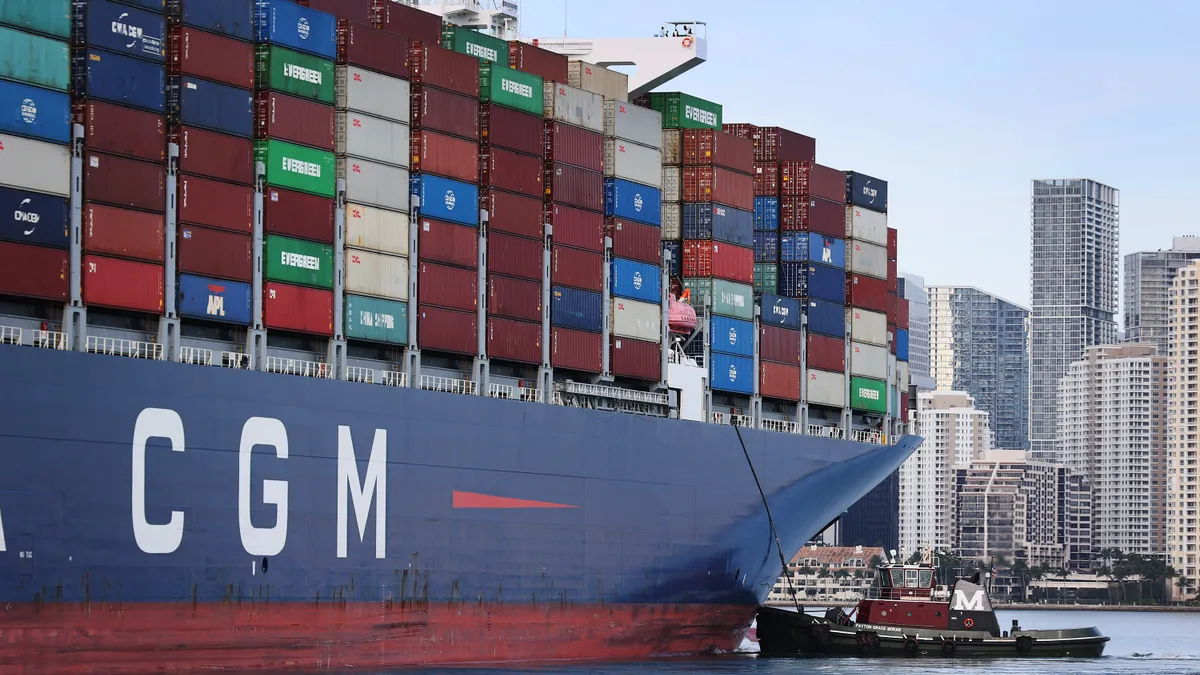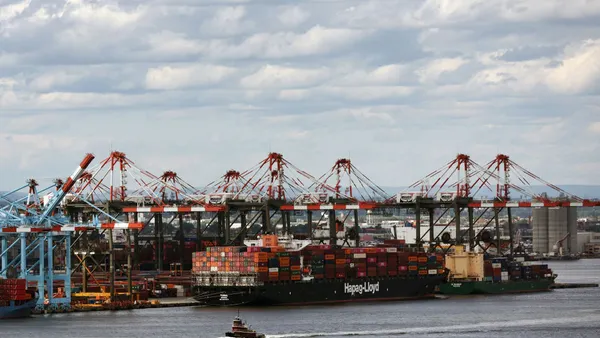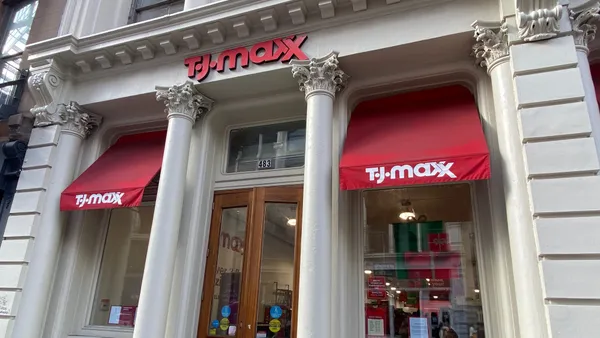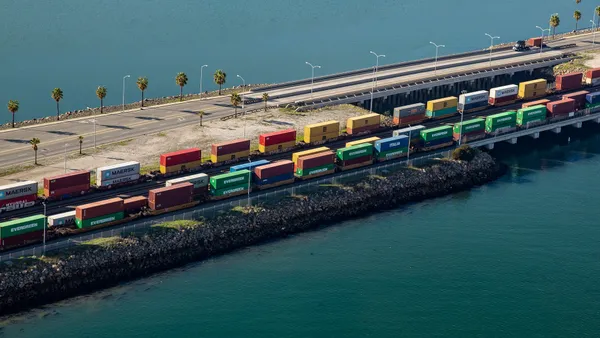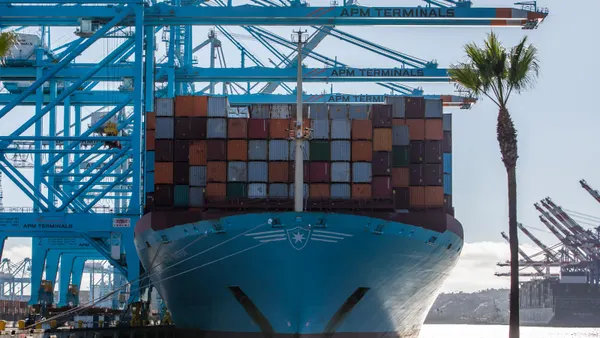Dive Brief:
- Ocean rates fell to their lowest levels since late 2023, near the start of the Red Sea crisis, Freightos Head of Research Judah Levine wrote in an Oct. 15 Freightos weekly update.
- Trade war-related frontloading and supply growth contributed to the pressure on Transpacific container prices, which fell 8% week over week, according to the report.
- U.S. import volumes are lower than they’ve been since mid-2023 and are projected to continue falling through December, per Levine, placing a further drag on rates.
Dive Insight:
Ocean rates and import volumes are sinking amid a wave of turbulence for maritime shippers, including the implementation of U.S. fees on China-linked ships and some easing tensions in the Red Sea.
Red Sea crisis developments
Expectations are rising for a return of container traffic in the Red Sea as the first stage of an Israel-Hamas ceasefire unfolds, Levine said. After years of schedule disruptions and congestion due to the yearslong crisis in the waterway, the ceasefire is expected to release a wave of capacity back into the market.
Levine reported that some carriers have already begun ramping up services through the Suez Canal. However, many carriers are holding off until “after a significant period of demonstrated stability and security,” Levine wrote in the update.
U.S. port fees on China-linked vessels
The U.S. rolled out port call fees for China-linked vessels Tuesday, despite hopes the charges would be reduced or canceled due to reported progress in trade negotiations between the two countries, Levine said.
Some carriers have decided not to pass on the additional costs to customers. For example, A.P. Moller - Maersk is planning to prioritize cost avoidance while deploying China-built ships on other trade lanes, Anders Sonesson, head of contract product management for North America, said in September. Meanwhile, China-based carrier Cosco has assured customers not to expect service disruptions or surcharges, Levine reported last week.
Due to such actions, the fees may have limited impact on eastbound Transpacific freight rates, operations or capacity, Levine said.
China also began charging port fees for U.S. ships Tuesday as a countermeasure to the U.S. ship tax, China’s Transport Ministry announced Oct. 14.
The country’s fees would impact about 5% of port calls, and impacted carriers will likely adjust vessel networks to lessen exposure, Levine said, citing data from Clarksons Research.
Other sanctions
On Friday, the U.S. also threatened to impose penalties on countries that vote in favor of the International Maritime Organization’s Net-Zero Framework — a global tax to slash carbon emissions in the ocean shipping industry. Some of the potential actions include imposing visa restrictions for crew members and additional port fees on ships owned, operated or flagged by NZF-supporting countries.
Meanwhile, the U.S. also plans to charge 100% tariffs on China-linked ship-to-shore cranes and cargo handling equipment starting Nov. 9, per a notice from the U.S. Trade Representative. The tariffs will also apply to intermodal chassis and chassis parts.
Editor's note: This story was first published in our Logistics Weekly newsletter. Sign up here.



